Article and photos:Nguyen Chi Linh
From late March, the local winds begin to change direction, blowing from east to west. This is the hottest time of the year, but Maldivians prefer to call it autumn, even though it is very short (lasting until April and May). Rains are almost gone, the sky becomes a brilliant blue. This is the season for professional photographers to flock to the Maldives to take photos from helicopters for advertising in travel magazines.
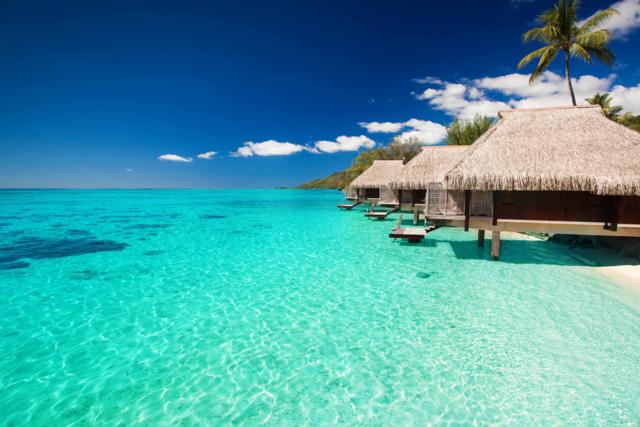
Coral stone walking, the traditional Maldivian massage method
I stopped by the capital Malé - the ancient city and one of the smallest capitals in the world - to visit a few places. Along the sea road at the end of Boduthakurufaanu Magu Avenue, the atmosphere is always bustling every afternoon with sellers and buyers when fishing boats dock after a day of sailing at sea. The gentle smiles of people with skin darkened by the sea breeze are always strangely charming.
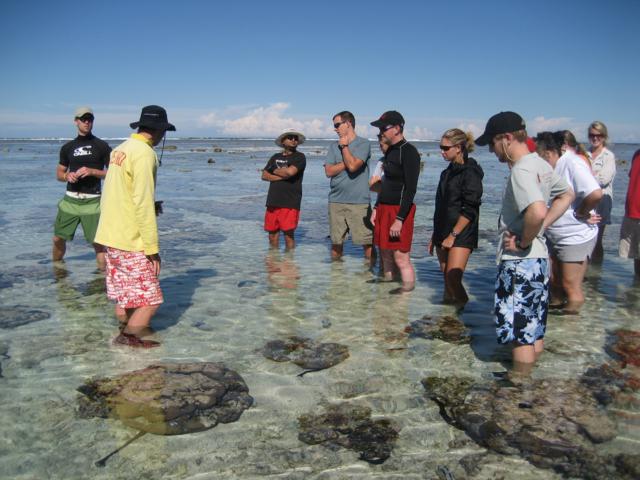
Before becoming a world-famous resort paradise, Maldives was an island nation with 26 coral islands surrounding a territory of 1,192 small islands inside. Of these, only about 200 islands were inhabited by local communities. It took the government 40 years of renovation for Maldives to take shape as it is today with 80 resorts formed on 200 islands. Winding along the sea route in Malé, there are many remaining coral reefs as vestiges of the past of the country located in the southwest of the Indian Ocean.
Every afternoon, Maldivians like to walk gently on the uneven rocks of the coral reefs. At first, when I saw the footsteps of the natives, a thought flashed through my mind: their right feet must be in “pain” because the coral rocks are always veined and sometimes have sharp thorns. Why do they do it with the “feeling good” attitude always shown on their faces?
Arzan, a local, burst out laughing when I asked that question. He explained: “It is a traditional Maldivian massage method. Walking on coral rocks will activate some acupuncture points in the soles of the feet that are connected to the meridians on the arms. Try it once when you arrive in the Maldives and try to do it every day, you will see your health gradually improve, especially your feet.”
The phrase “acupressure” is no longer strange in medicine because the Chinese, Indians; even the Native Americans of America and the ancient Egyptians have used this traditional medical method since ancient times. Paintings drawn in the year 2,400 BC found in the tombs of Pharaohs in the city of Luxor – Egypt also proved that. The painting depicts a doctor pressing acupressure points to treat the king. According to scientific research, pressing acupressure points helps blood circulate better, improving some natural functional conditions of the body. More importantly, pressing acupressure points helps stimulate the brain to help people “release” the troubles in life.

“Nature has endowed Maldives with a huge natural wealth of coral reefs, why don’t you experience it when you come here?” Mr. Arzan’s provocative question and invitation made me excited to step down to the coral reefs to try the traditional Maldivian foot massage for free.
The pain in my feet made me hesitate when walking on the rough, pointed-shaped rocks. Arzan laughed: “I misunderstood the Maldivian foot massage method!” Walking on coral rocks does not mean giving a massage, but finding rocks with rough patterns and performing the massage correctly. According to Arzan’s instructions, the first main acupuncture points are located on the sole of the foot, starting from the tip of the big toe, running diagonally to the left under the mound of the remaining toes (for the left foot, the opposite is true for the right foot), the second main acupuncture point is located between the heel of the foot and the last acupuncture points are scattered on 1/3 of the foot from the tip of the toes (from the edge of one foot to the edge of the other foot). “Activate them with the veins of the coral rocks to find a comfortable feeling,” Arzan encouraged me.
As he said, I began to have an indescribable “strange” feeling when I pressed the acupuncture points under my feet. Arzan continued to explain: “In the Maldives, local people also use coral stones to build mosques. The meaning of massaging feet with coral stones to help people release their worries in life is deeply ingrained in the subconscious of the locals. Therefore, before entering the main hall, some local people often rub their feet against the coral stone pillars to dedicate their pure souls to Allah.”
The sun was red and big as a deflating balloon in the distance. The sun was setting and I was getting a little addicted to the free foot massage in the cool sea breeze.
“In the Maldives, local people also use coral stones to build mosques. The meaning of foot massage with coral to help people release the sadness in life is ingrained in the subconscious of the natives.”. (Arzan, a local resident)
Go fishing at night at sea
Kurumba Resort, where I was staying, did not organize night fishing tours at sea. But thanks to the hospitality of the receptionist, I also got a ticket for night fishing (Olhuveli Resort organized it for 20 USD/person).
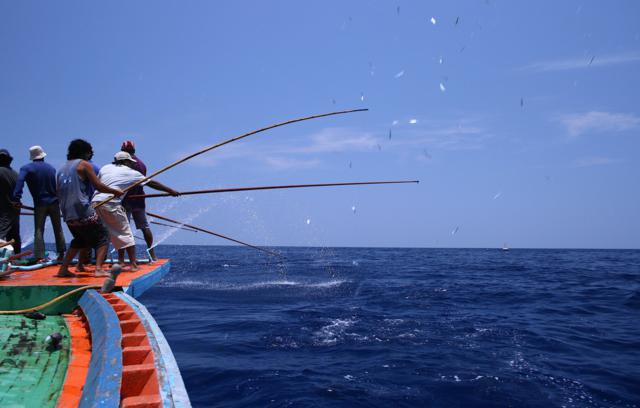
That day, I was picked up at 6 pm on a boat (more like a canoe) with 8 international guests. The greetings made the atmosphere on the boat warm. I felt seasick again when the boat started a bit because of the big waves crashing against the side of the boat. The flight attendants gave each person a bracelet to wear on their wrist, underneath the bracelet was an anti-seasickness pill that would be gradually absorbed through the skin into the body. It was also a new experience.

The big waves unintentionally gave me a half-real, half-illusory feeling of the scenery while drifting on the sea. Looking back at the stern of the ship when the sun was still shining, the surrounding resorts looked like white shells lying carelessly in the blue sea.
Mr. Naxyh, the group leader, chattered on about the history of the islands as well as traditional crafts. He wanted everyone tonight to have a true experience of the “way of making a living” of the Maldivians in ancient times, which was to go fishing on traditional boats (calledDhoni). His witty and humorous storytelling made me push away seasickness.
When night falls, the night lights of the resorts appear and disappear on the waves, sometimes creating an image like fireworks suddenly shooting up into the sky from the sea surface.
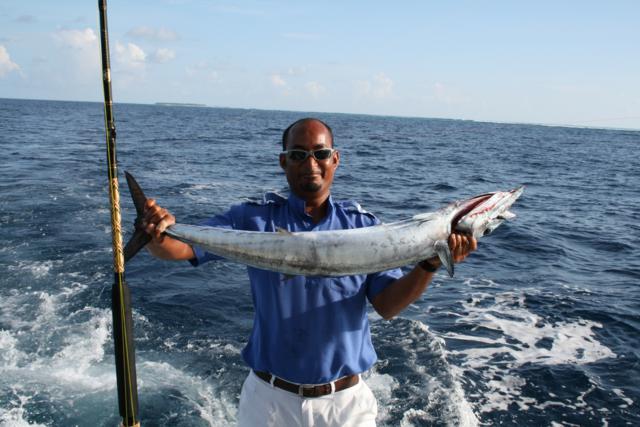
I was taken down to the Dhoni, which had been tied to the hull of the large boat. On board, the stewardess had prepared for me a modern fishing rod and some bait. The oil-burning hurricane lamp on the Dhoni flickered in the pitch-black night, making the ocean even more mysterious. I was a little scared when I stepped down here, for fear that the big waves of the ocean would capsize the boat. Naxyh smiled and pointed at the light of the blue buoy I was wearing: that was the signal that they could find me!
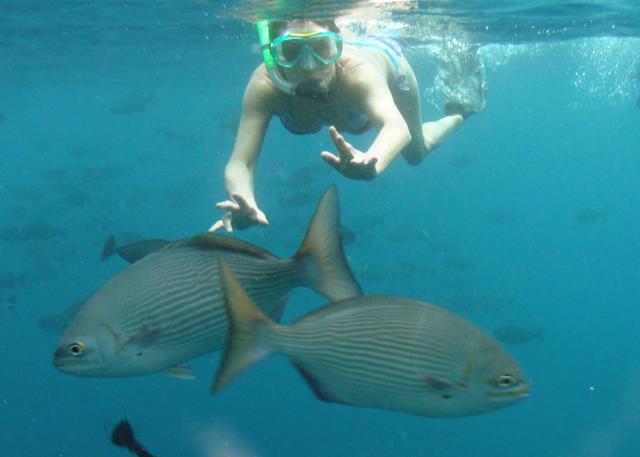
The cool autumn breeze blowing from the sea brought a pleasant feeling. I cast my line and sat waiting for the fish to bite. The twinkling stars in the sky combined with the white light of the squid fishing lamps to create a magical galaxy at the end of the horizon. The fish seemed to be playing a trick on me, refusing to bite the bait but instead wagging their tails around the boat, making a pleasant clicking sound.
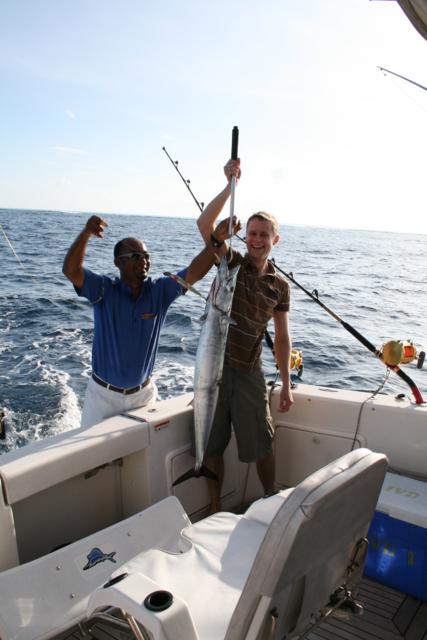
Everyone was excited to show off their catch after returning to the boat. I only caught two: a small tuna and a herring. For me, the catch was not important, but I got a sense of how the Maldivians made a living in the past. Although the catch of the group was not much, the fragrant seafood BBQ party was prepared to welcome everyone and the sound of champagne being popped amid the cheers made the atmosphere on the boat bustling and bustling. Everyone sang along loudly, although those high-pitched voices were always lost in the sound of the waves in the vast ocean.
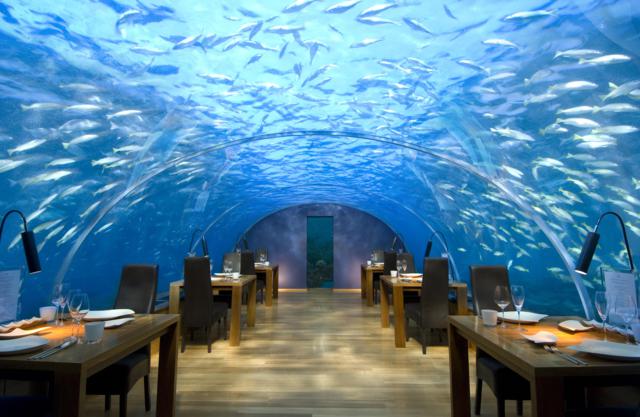
Before the trip, I always asked myself, why is Maldives always called by the beautiful name of “paradise” resort? And during my days in Maldives, I had the answer even though my wallet for the trip was quite empty. Leaving the archipelago, I still regretted because I had days of being a “real God” here.
For me the achievement is not important, but I got a feel for how the Maldivians made a living in the past.
More information:
+ In Southeast Asia, only Singapore Airlines (transit in Singapore) and Malaysia Airlines (transit in Kuala Lumpur) operate flights from Ho Chi Minh City or Hanoi to the capital of Malé in Maldives. Singapore Airlines has two flights per day to Malé from Singapore, but from Ho Chi Minh City to Singapore, you have to stay at the airport for one night and arrive in Malé the next day. Visitors have the opportunity to see the whole view of Maldives from above. Meanwhile, Malaysia Airlines has three flights from Ho Chi Minh City to Kuala Lumpur, then connecting in Kuala Lumpur to Malé at night, so visitors cannot see the whole view of Maldives, but in return, the ticket price is cheaper.
+ Maldives exempts visas for most citizens in the world. When entering the country, you only need to present your return flight ticket and hotel booking.
+ Maldivians use languageDhevehi– a mixture of 3 languagesHindi(India),Arabic(Arabic) andSinhala(Sri Lanka).
+ The local currency of Maldives isRufiyaa(1 USD = 15.38 MVR). Tourists do not need to exchange much money, because USD and Euro are widely used through cards.
+ Visitors are not allowed to bring pork and pork products into the country and are not allowed to bring shellfish or corals out of the country.
+ In the resorts, there are many optional tours for sale with prices ranging from 20 - 100 USD/tour.



































